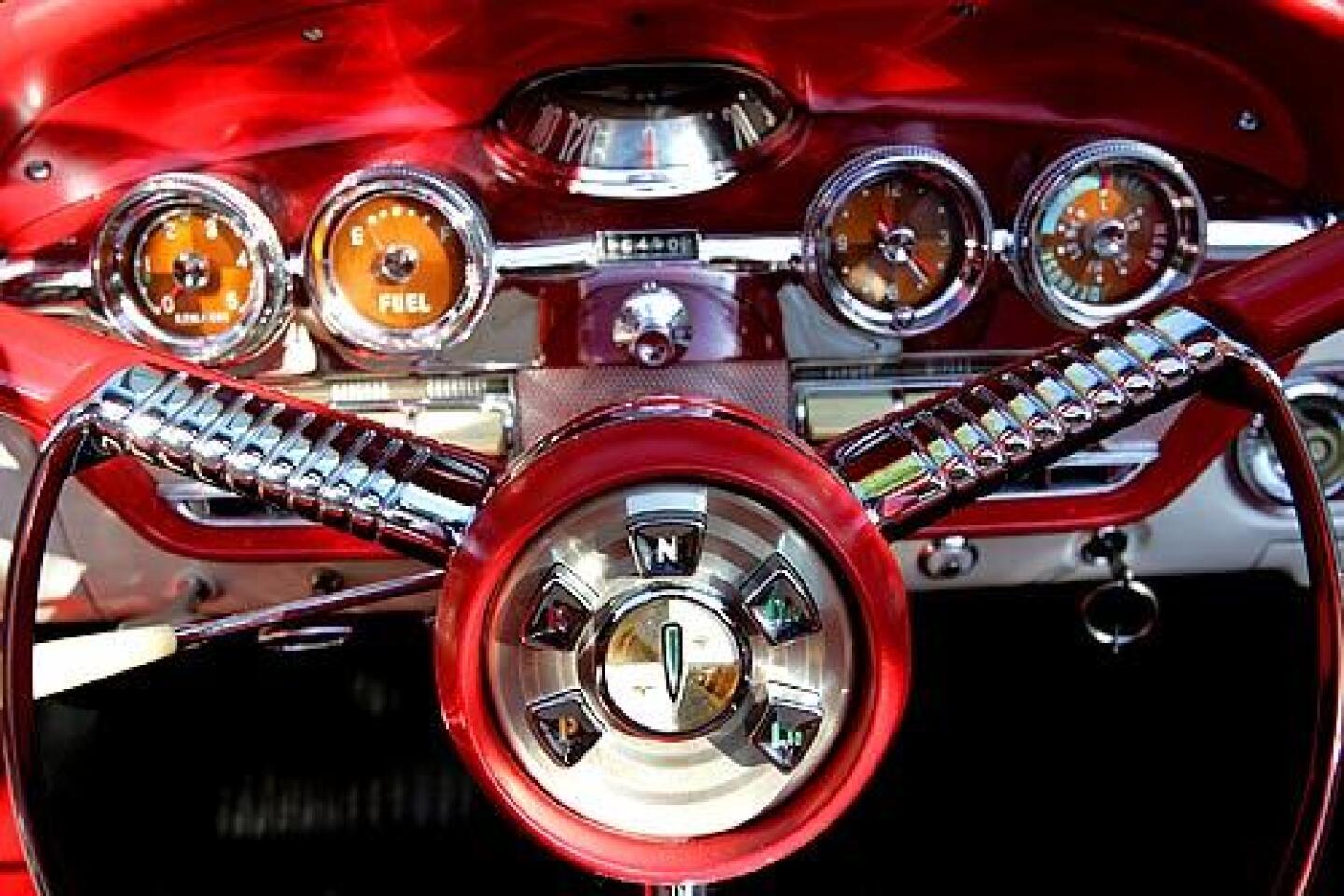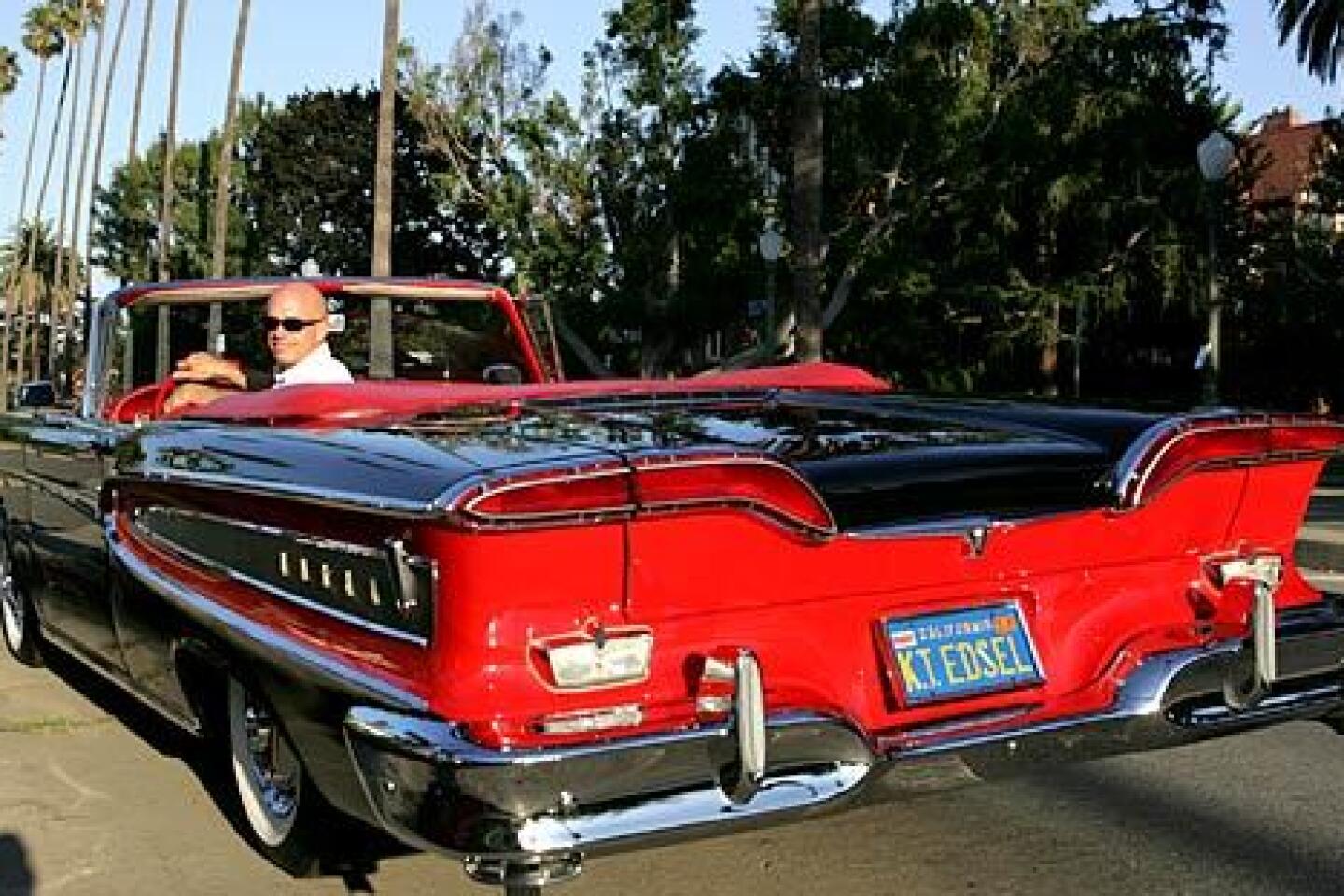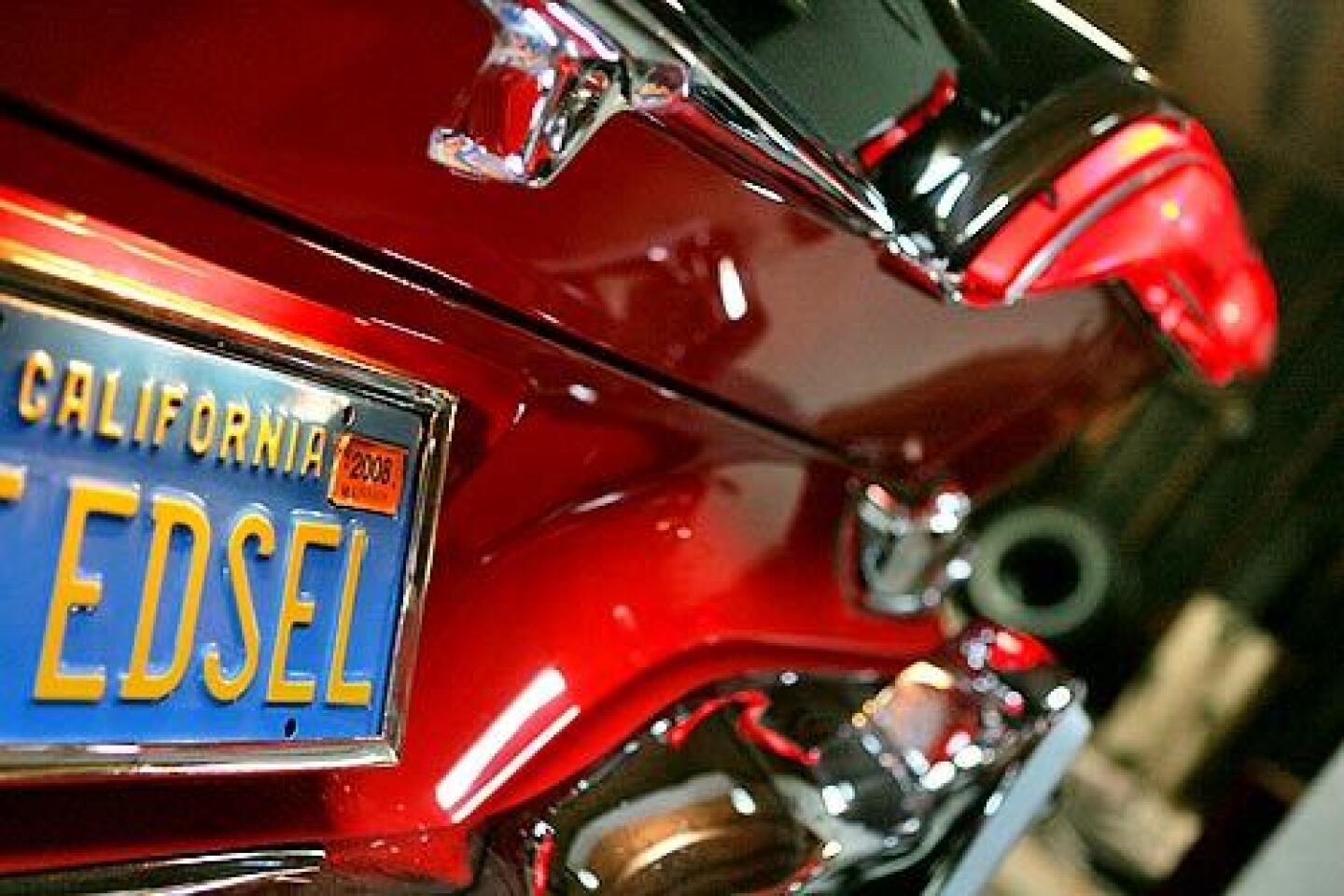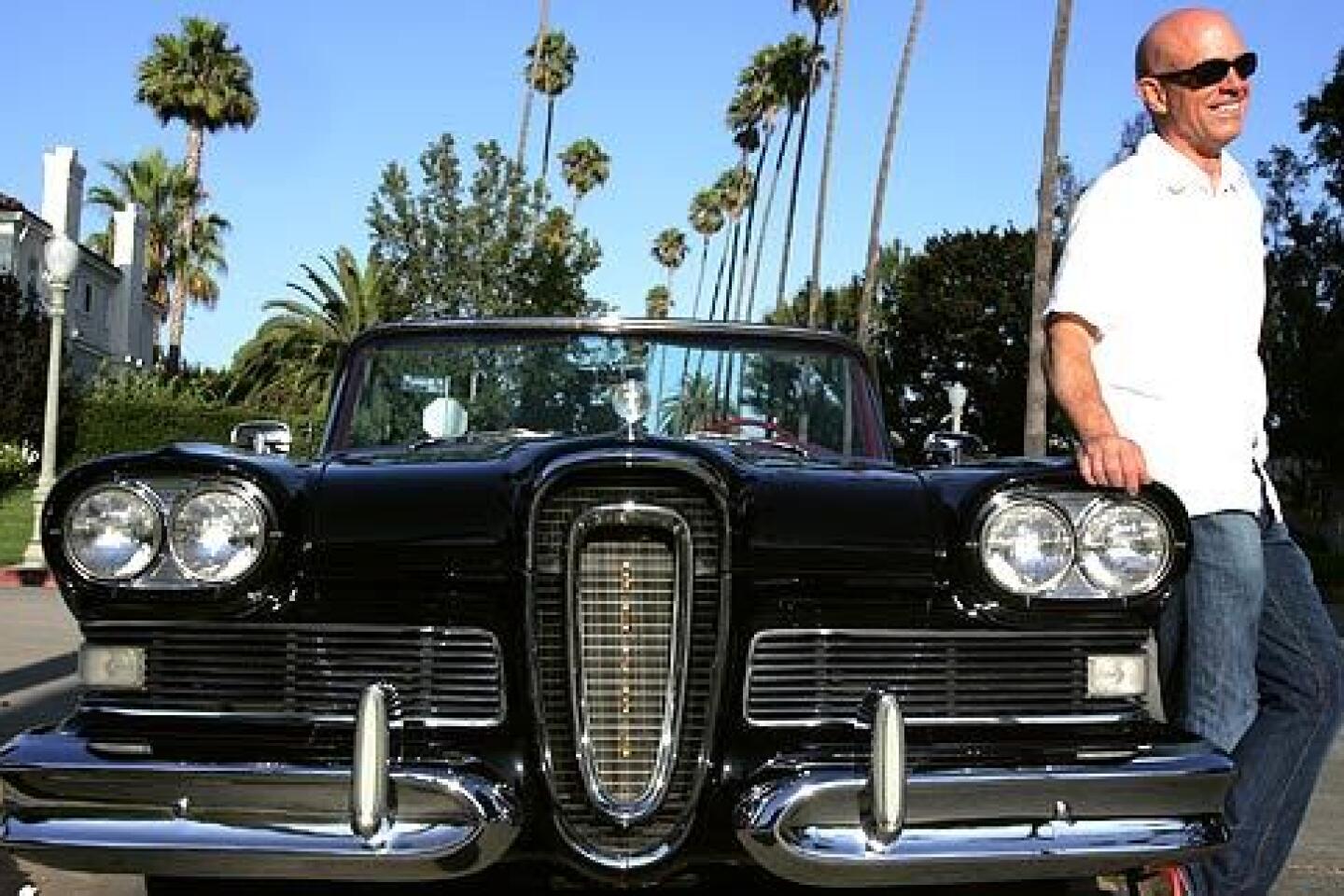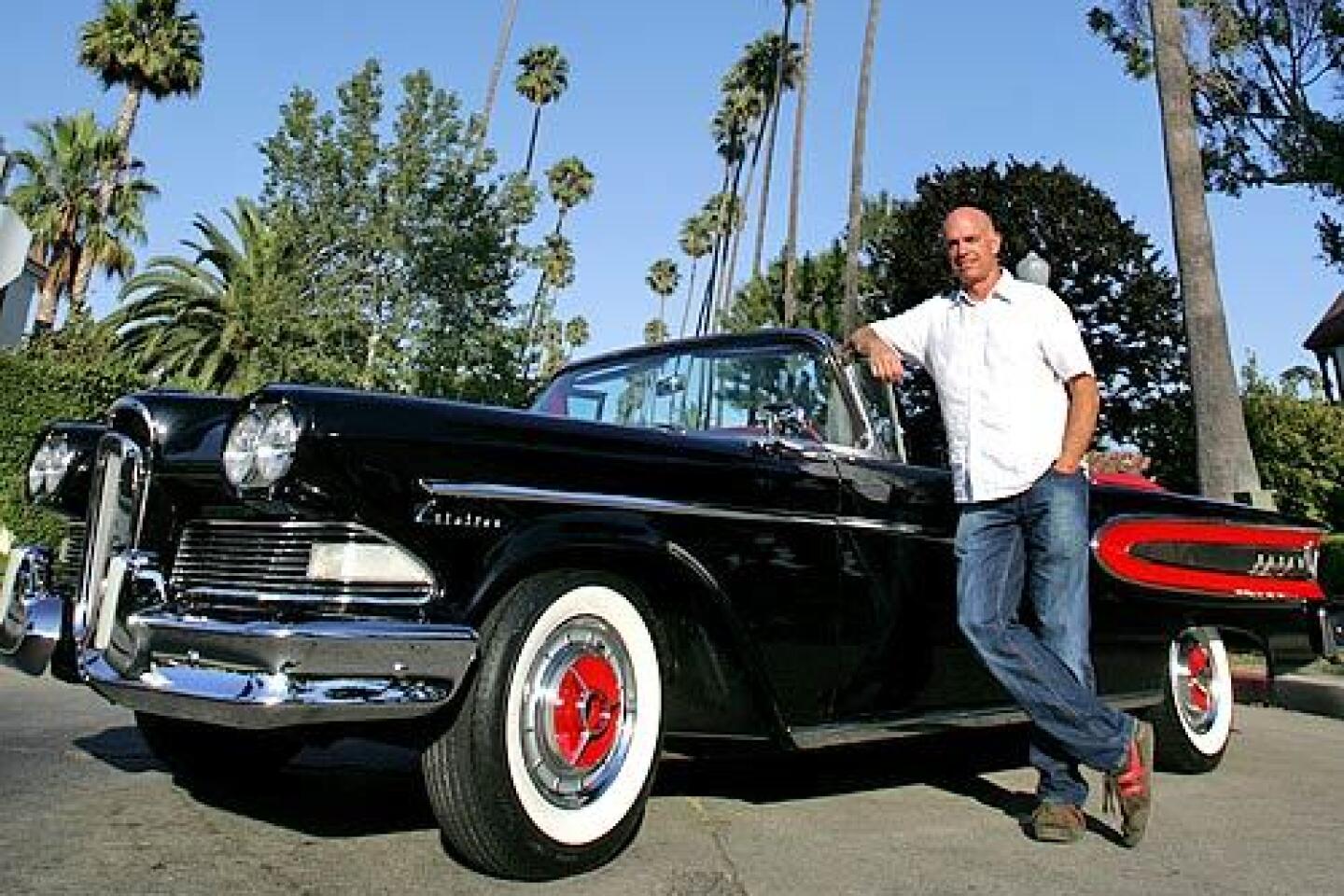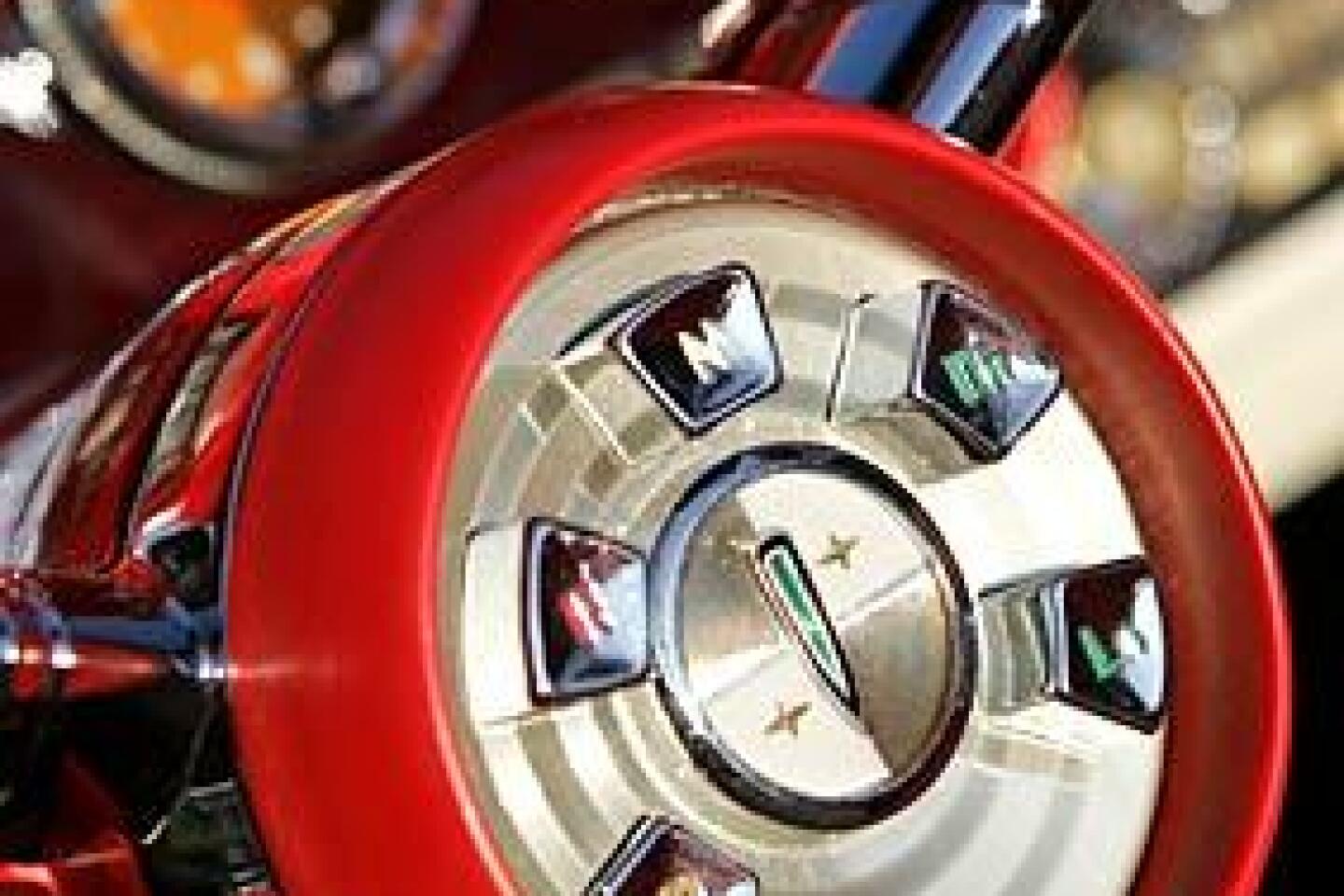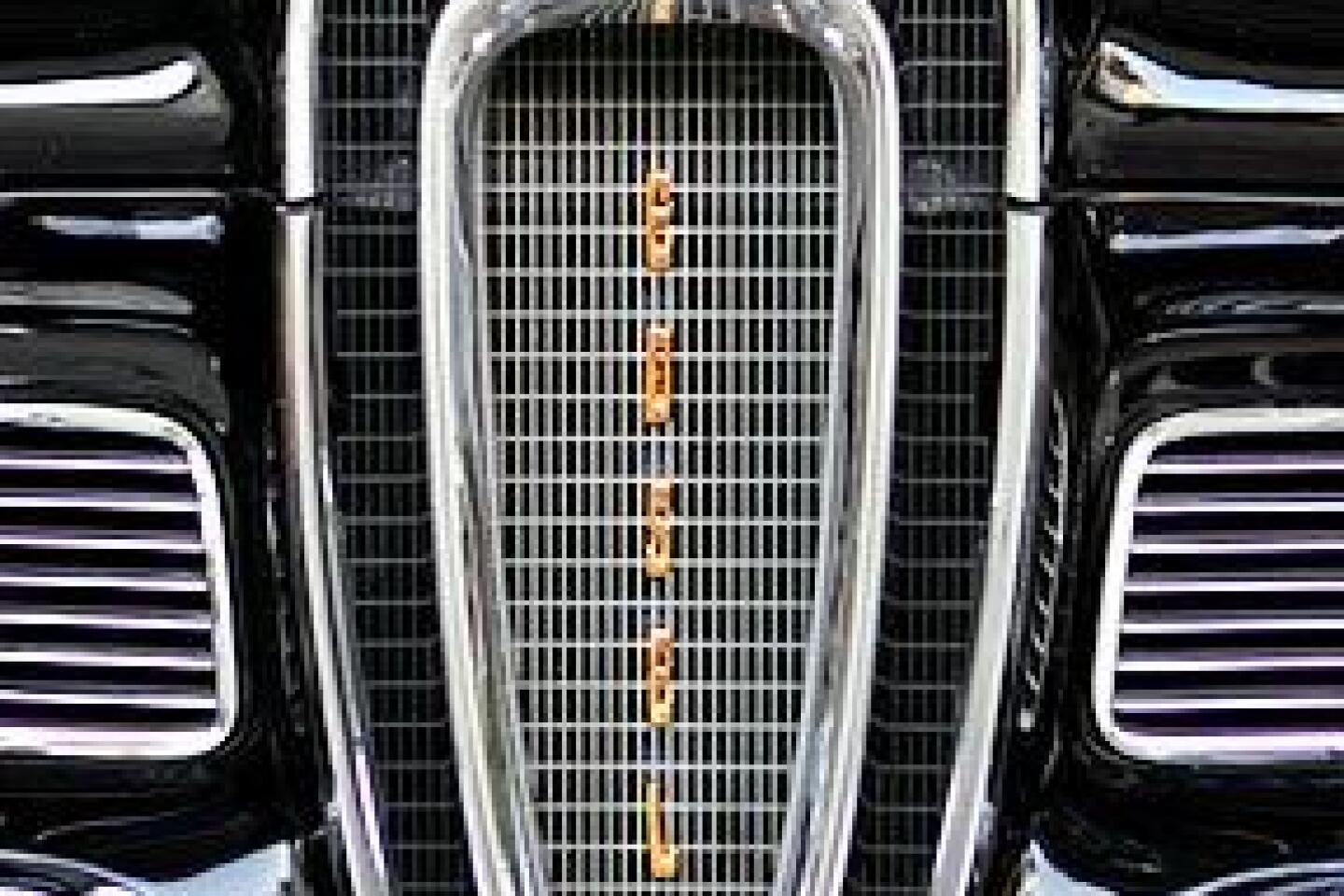After decades of ridicule, Edsel takes its victory lap
- Share via
Sometimes you have to wait 50 years to get the last laugh. Take the Edsel.
Please.
Long the butt of jokes, Ford Motor Co.’s paean to 1950s automotive excess has staged a Donald Trump-like comeback to become a sought-after prize among car collectors. And it’s not just because the car was such a colossal failure that it became a synonym for, well, colossal failures.
“A lot of people like the Edsel because of the underdog thing,” said 57-year-old Kris Trexler of Los Angeles, who lived across the street from an Edsel dealer while growing up in Wichita, Kan.
“But I didn’t come at it from that angle at all. It was just something that reminded me of my youth,” he said.
Trexler, an Emmy-winning video editor, owns two Edsels, including a black and red 1958 Citation-series convertible that he bought in 1981 for $4,500.
“When you take an Edsel convertible out on the road, believe me, people notice,” said Trexler, who once turned down an offer of $75,000 for his Citation. “There are a lot of old classic cars on the road, but there’s nothing that looks like that.”
It’s hard to debate the claim. Back in the day, the Edsel’s unusual oval grille was compared to a toilet seat. It gave the car what one reviewer called the appearance “of an Oldsmobile sucking a lemon.”
The Edsel’s distinctiveness is translating into big money on the auction circuit, at least for the rarer models.
At an auction in November, a 1960 Ranger-series convertible -- one of only 10 known to exist -- sold for $184,000, a record for an Edsel. At the same sale, a 1958 Citation convertible went for $121,000, and a 1959 Corsair drop-top hammered at $93,500.
Among collectors, “it’s certainly right up there with the classic American cars,” said Terry Lobzun, a spokesman for RM Auctions Inc.
That wasn’t always the case.
When Ford introduced the Edsel -- on Sept. 4, 1957 -- it was hailed as a car of the future. Named for Henry Ford’s son Edsel, it offered powerful engines (including a 345-horsepower V8) and advanced technology, including push-button gear-shifting and self-adjusting brakes.
The base Ranger series sedan listed for $2,519 (just over $18,000 in 2007 dollars), according to Phil Skinner, collector car market editor for Kelley Blue Book in Irvine.
Despite generally positive reviews and a splashy launch campaign that featured Bing Crosby, Louis Armstrong and other icons of the era, the Edsel was a nonstarter with buyers.
Not everyone was bowled over by the high-tech touches. For example, the shifting buttons, mounted in the center of the steering wheel, reportedly caused some drivers to shift gears when all they wanted to do was honk the horn.
Early Edsels also suffered from poor quality, and Ford executive Robert McNamara -- later appointed secretary of Defense by President Kennedy -- was opposed to the car and worked to kill it.
Perhaps fatally, the Edsel came out as America was sliding into a recession. The public was suddenly looking for smaller, more affordable cars -- not the chrome-plated fire breathers that were the metier of 1950s Detroit.
“It became so unacceptable to own an Edsel that there was nothing they could do styling-wise to get people to buy it,” Trexler said. “When you drove an Edsel back in those days, people laughed at you.”
Not everyone felt that way, of course. Benefiting from the car’s instant notoriety, Robert Mayer picked up a barely used black-and-white Corsair with gold upholstery in 1958 for $500.
“I thought, ‘This is the most beautiful car I’ve ever seen in my life,’ ” recalled Mayer, a 79-year-old retired missionary who runs an Edsel parts supply shop in Fort Myers, Fla.
He liked the powerful engine too. “I got pulled over for speeding on my first drive,” he said.
Despite a few fans such as Mayer, the Edsel couldn’t overcome the various challenges it faced and was discontinued after three years. Its fall was so complete that for people of a certain age, the name evokes nothing so much as total defeat.
(Ford, by the way, isn’t planning anything special for the Edsel’s 50th birthday; the company said it was busy working on next year’s 100th anniversary of the Model T.)
The popularity of the Edsel among collectors mirrors that of other vehicles possessing what Lobzun of RM Auctions called “the quirkiness factor.”
For example, a 1964 Amphicar, an amphibious car produced in Germany for the U.S. market, recently went for $60,000 at auction, he said. A 1950s-era Fiat Jolly, a tiny car with wicker seats and a canvas top designed for wealthy yacht owners, sold for $36,000.
So-called orphan cars -- long-vanished nameplates such as Nash, Hudson, Kaiser and, of course, Edsel -- are also popular.
“It’s owning something that no one else has,” Skinner said. Show up at a collectors’ gathering in one of these babies “and for a few moments you’ll be the star of the show.”
Even some of Detroit’s gaffes from the 1970s -- the AMC Gremlin, the Ford Pinto, the Chevy Chevette -- are attracting cult-like followings. But Skinner said only rare versions of those stinkers, such as the Levi-edition Gremlin with its faux-denim upholstery, fetched top dollar as collectibles.
Skinner estimated that from 5,000 to 6,000 Edsels remain in circulation. That’s a high survival rate for a car that had a total production run of less than 111,000, and it helps hold down the prices of the more common versions.
“You can pick up a really nice car for under $5,000,” he said. “It’s a great way to get into the collecting hobby for not much money.
“And when you pull up next to a Ferrari, people will look at your Edsel rather than that Ferrari.”
martin.zimmerman
@latimes.com
More to Read
Inside the business of entertainment
The Wide Shot brings you news, analysis and insights on everything from streaming wars to production — and what it all means for the future.
You may occasionally receive promotional content from the Los Angeles Times.
